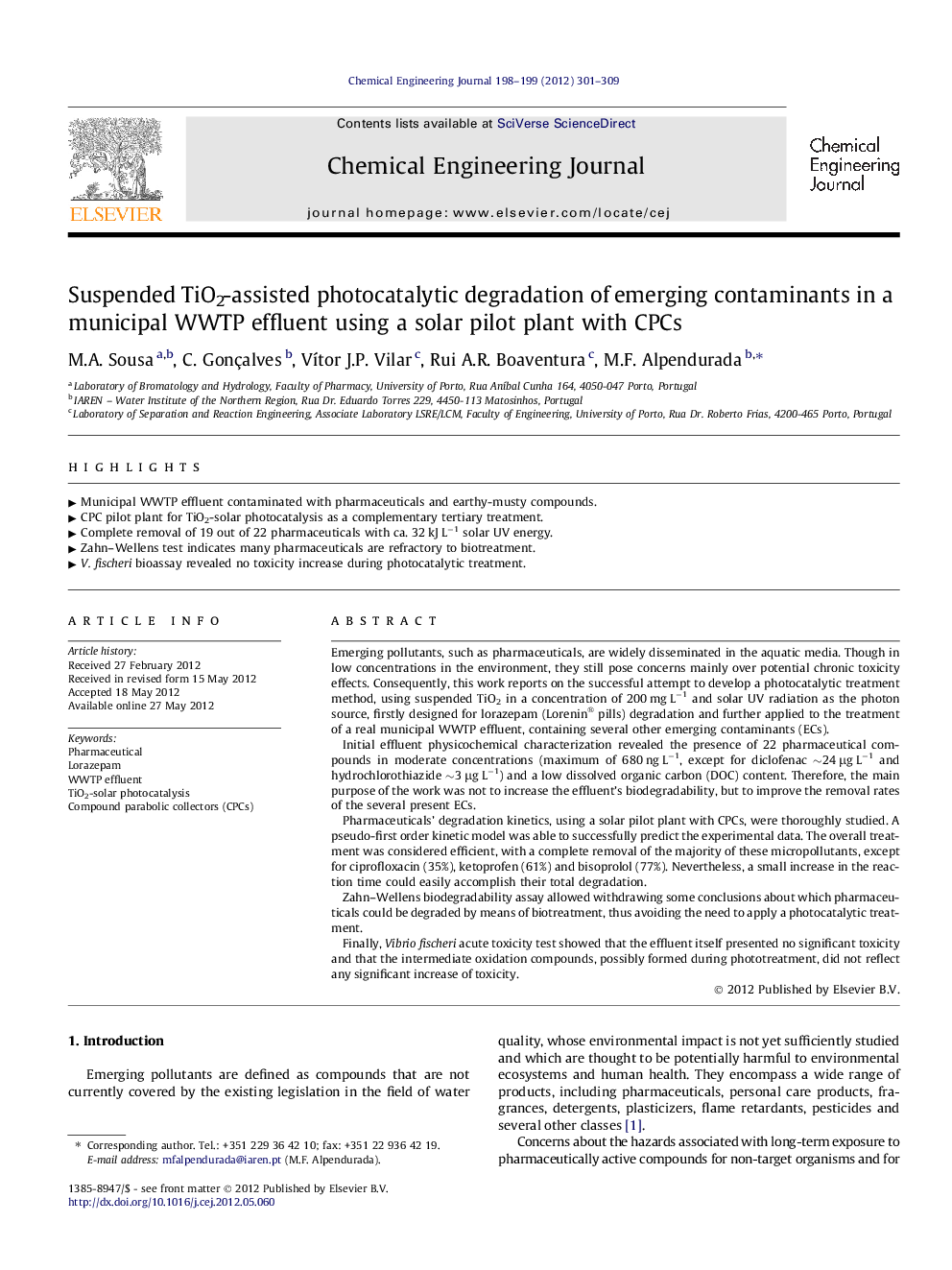| کد مقاله | کد نشریه | سال انتشار | مقاله انگلیسی | نسخه تمام متن |
|---|---|---|---|---|
| 149634 | 456435 | 2012 | 9 صفحه PDF | دانلود رایگان |

Emerging pollutants, such as pharmaceuticals, are widely disseminated in the aquatic media. Though in low concentrations in the environment, they still pose concerns mainly over potential chronic toxicity effects. Consequently, this work reports on the successful attempt to develop a photocatalytic treatment method, using suspended TiO2 in a concentration of 200 mg L−1 and solar UV radiation as the photon source, firstly designed for lorazepam (Lorenin® pills) degradation and further applied to the treatment of a real municipal WWTP effluent, containing several other emerging contaminants (ECs).Initial effluent physicochemical characterization revealed the presence of 22 pharmaceutical compounds in moderate concentrations (maximum of 680 ng L−1, except for diclofenac ∼24 μg L−1 and hydrochlorothiazide ∼3 μg L−1) and a low dissolved organic carbon (DOC) content. Therefore, the main purpose of the work was not to increase the effluent’s biodegradability, but to improve the removal rates of the several present ECs.Pharmaceuticals’ degradation kinetics, using a solar pilot plant with CPCs, were thoroughly studied. A pseudo-first order kinetic model was able to successfully predict the experimental data. The overall treatment was considered efficient, with a complete removal of the majority of these micropollutants, except for ciprofloxacin (35%), ketoprofen (61%) and bisoprolol (77%). Nevertheless, a small increase in the reaction time could easily accomplish their total degradation.Zahn–Wellens biodegradability assay allowed withdrawing some conclusions about which pharmaceuticals could be degraded by means of biotreatment, thus avoiding the need to apply a photocatalytic treatment.Finally, Vibrio fischeri acute toxicity test showed that the effluent itself presented no significant toxicity and that the intermediate oxidation compounds, possibly formed during phototreatment, did not reflect any significant increase of toxicity.
► Municipal WWTP effluent contaminated with pharmaceuticals and earthy-musty compounds.
► CPC pilot plant for TiO2-solar photocatalysis as a complementary tertiary treatment.
► Complete removal of 19 out of 22 pharmaceuticals with ca. 32 kJ L−1 solar UV energy.
► Zahn–Wellens test indicates many pharmaceuticals are refractory to biotreatment.
► V. fischeri bioassay revealed no toxicity increase during photocatalytic treatment.
Journal: Chemical Engineering Journal - Volumes 198–199, 1 August 2012, Pages 301–309